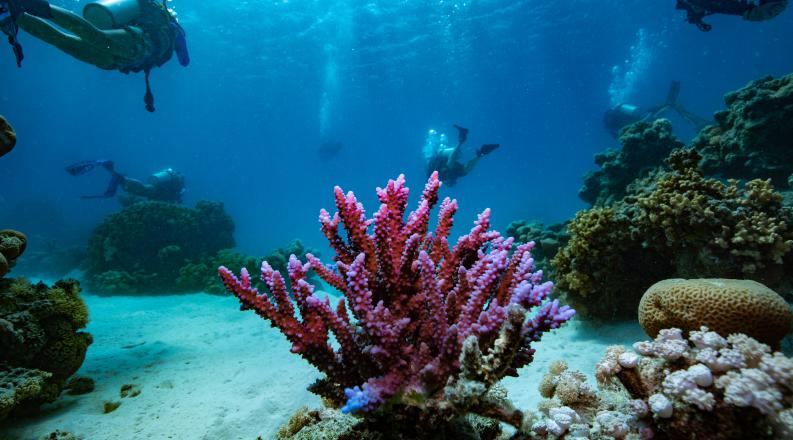By: Nicolas Evensen
A new study led by Old Dominion University postdoctoral researcher Nicolas Evensen, Ph.D. and Associate Professor Daniel Barshis has highlighted the novel use of rapid experimental tests to identify heat-tolerant corals across large regions in a matter of days. Their findings were recently published in the journal Coral Reefs.
Coral reefs are some of the most biodiverse ecosystems in the world and are extremely valuable to humans as a source of food, income, and coastal protection. While corals thrive in warm tropical waters, recent ocean warming due to climate change has led to an increase in "marine heatwaves," a term describing seawater temperatures that are far higher than what corals can tolerate. When marine heatwaves wash over a reef, corals become stressed and expel the microalgae living in their tissues, revealing the white skeleton beneath, in a process called coral bleaching. Corals can die off in large numbers if these stressful heatwave events persist for extended periods.
"We are seeing increasingly frequent and severe marine heatwaves events across the world's coral reefs, leading to high levels of coral bleaching and mortality" said Evensen. "The Great Barrier Reef in Australia, the world's largest coral reef, is experiencing its fourth mass bleaching event since 2016 - that's almost one mass bleaching event every year."
The increase at which these bleaching events are occurring has led ODU researchers and collaborators to develop a low-cost, portable experimental system, called the Coral Bleaching Automated Stress System (or 'CBASS') that can rapidly test and compare the heat tolerance of corals. The researchers used this system along the entire coast of the Red Sea, using the natural temperature gradient occurring from the northern end (in the Gulf of Aqaba) to the southern entrance (the Gulf of Aden) to test how corals that have experienced different historical temperatures differ in their ability to withstand rapid heat stress. As expected, the team found lower temperature limits for corals from cooler reefs in the northern Red Sea compared to corals from warmer reefs. However, they also found lower than expected limits for corals from the hottest reefs, suggesting that some corals in the Red Sea may already be living beyond their temperature limits.
"We are very excited about these results," said Professor Barshis. "This study demonstrates the full potential of this new low cost technology (CBASS). Being able to cover over 2300 kms of coastline and test so many corals in a matter of days, rather than months as with other typical experiments, can really push the boundaries of coral reef research and conservation."
Barshis and his team have recently received funding to use this system across the world's coral reefs, teaming up with an international team of collaborators. They are hopeful that this system will enable a broader group of individuals, notably students and researchers located in lower-income countries near coral reefs, to conduct groundbreaking science that can be directly used to better manage and protect their local reefs.



